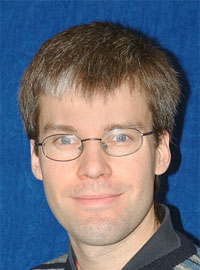Philip Best

Professor P N Best, FRSE
- Position
- Head of School
- Category
- Academic staff
- Location
-
James Clerk Maxwell Building (JCMB)
Room 4323b
- Email: pnb [at] roe.ac.uk
- Tel: +44 (0)131 651 3451
- Personal home page
- Edinburgh Research Explorer profile
Philip is a member of the following School research institute:
Research interests
- Observational cosmology, studies of galaxy formation, and the high redshift Universe.
- Active galactic nuclei (AGN), in particular their host galaxies, and their influence on galaxy evolution.
- Radio astronomy, the cosmic evolution of radio sources, their growth, and radio source shocks
- Star-forming galaxies at high redshift, and the star-formation history of the Universe
- Clusters and groups of galaxies, and the effect of environment on the nature and properties of galaxies.
Administrative roles
I am currently Head of the Institute for Astronomy
I have designed, organised and lectured a number of different courses, from pre-honours to Masters level, as well as serving on the School's Teaching Committee for five years, and being Senior Director of Studies of four years. Currently, I organise and lecture the SH/IM level course "High Energy Astrophysics" as well as leading the "Telescope Group Project" and supervising Senior Honours and Integrated Masters projects.
Philip has featured in the following recent School news stories:
- School of Physics and Astronomy welcomes new Head of School
- UK-led robotic sky scanner reveals its first galactic fingerprint
- Major success for Edinburgh Astrophysicists with the James Webb Space Telescope
- Ultra-sensitive radio images reveal thousands of star-forming galaxies in early Universe
- Triple success in Astronomy Grants
Recent publications
- The JWST Emission Line Survey (JELS): An untargeted search for Hα emission line galaxies at z > 6 and their physical properties DOI, Monthly Notices of the Royal Astronomical Society, 541, 2, p. 1348-1376
- , Astronomy and Astrophysics, 695, p. 1-20
- , Astronomy and Astrophysics, 694, p. 1-17
- A novel Bayesian approach for decomposing the radio emission of quasars – II. Link between quasar radio emission and black hole mass DOI, Monthly Notices of the Royal Astronomical Society, 537, 2, p. 858-875
- , Astrophysical Journal Letters, 978, 2, p. 1-14

